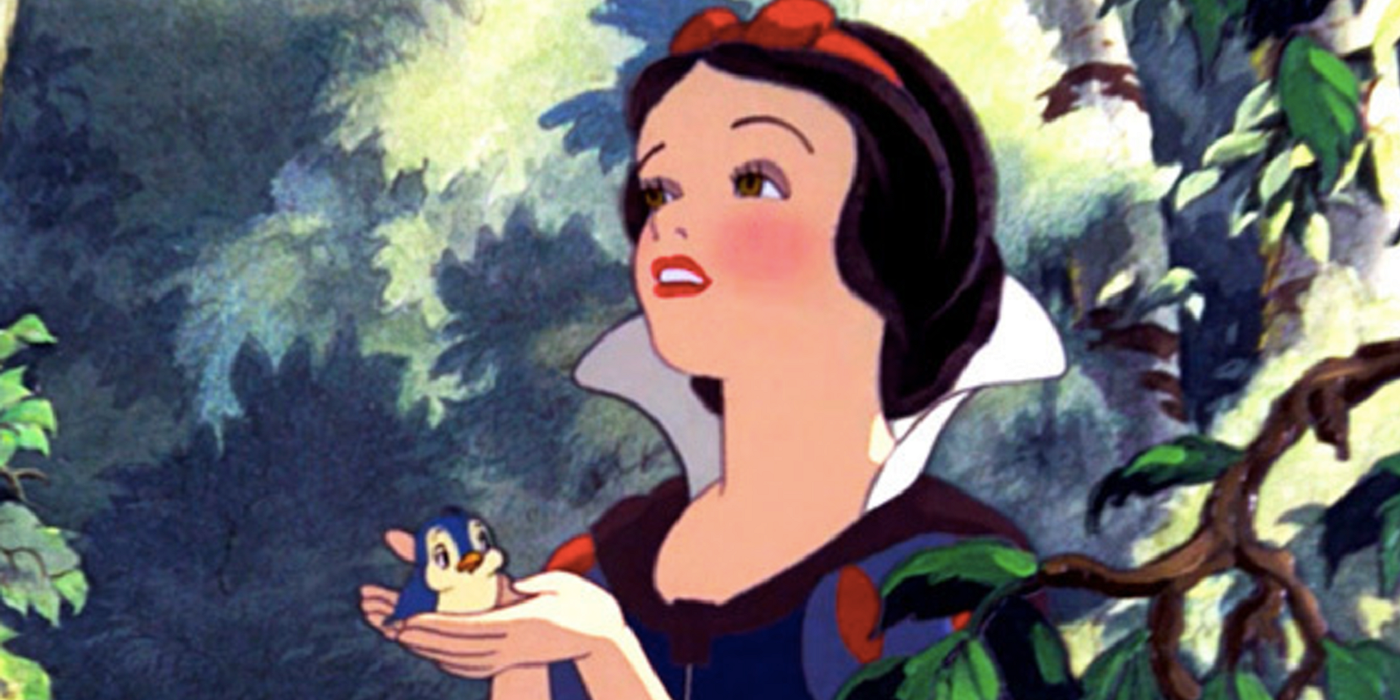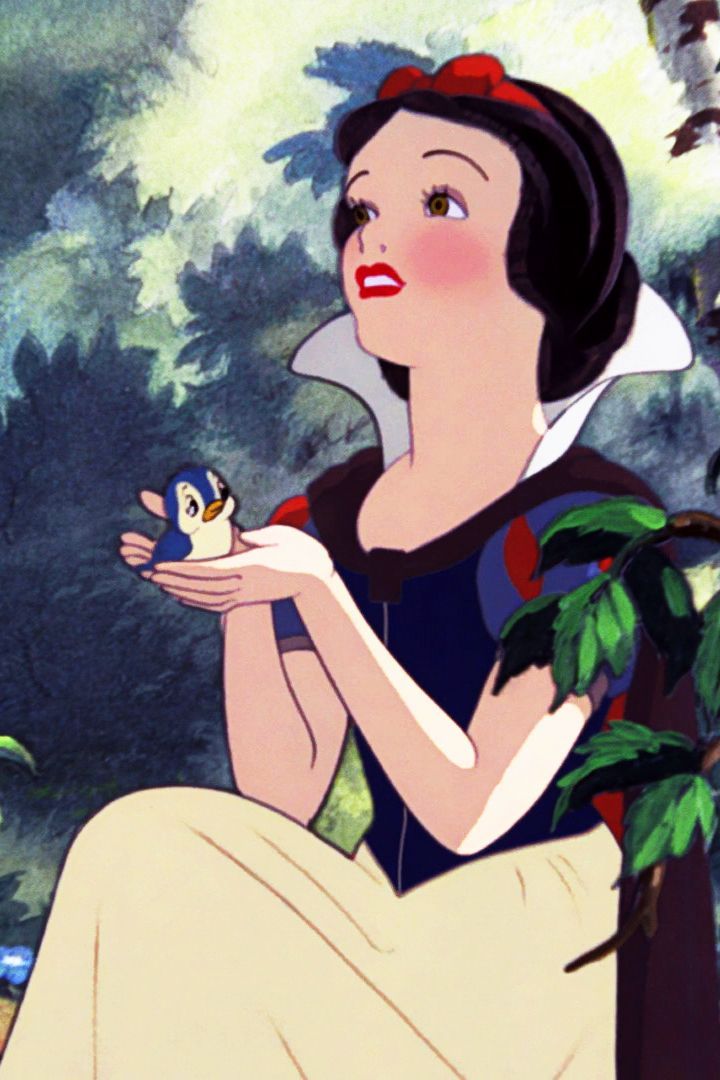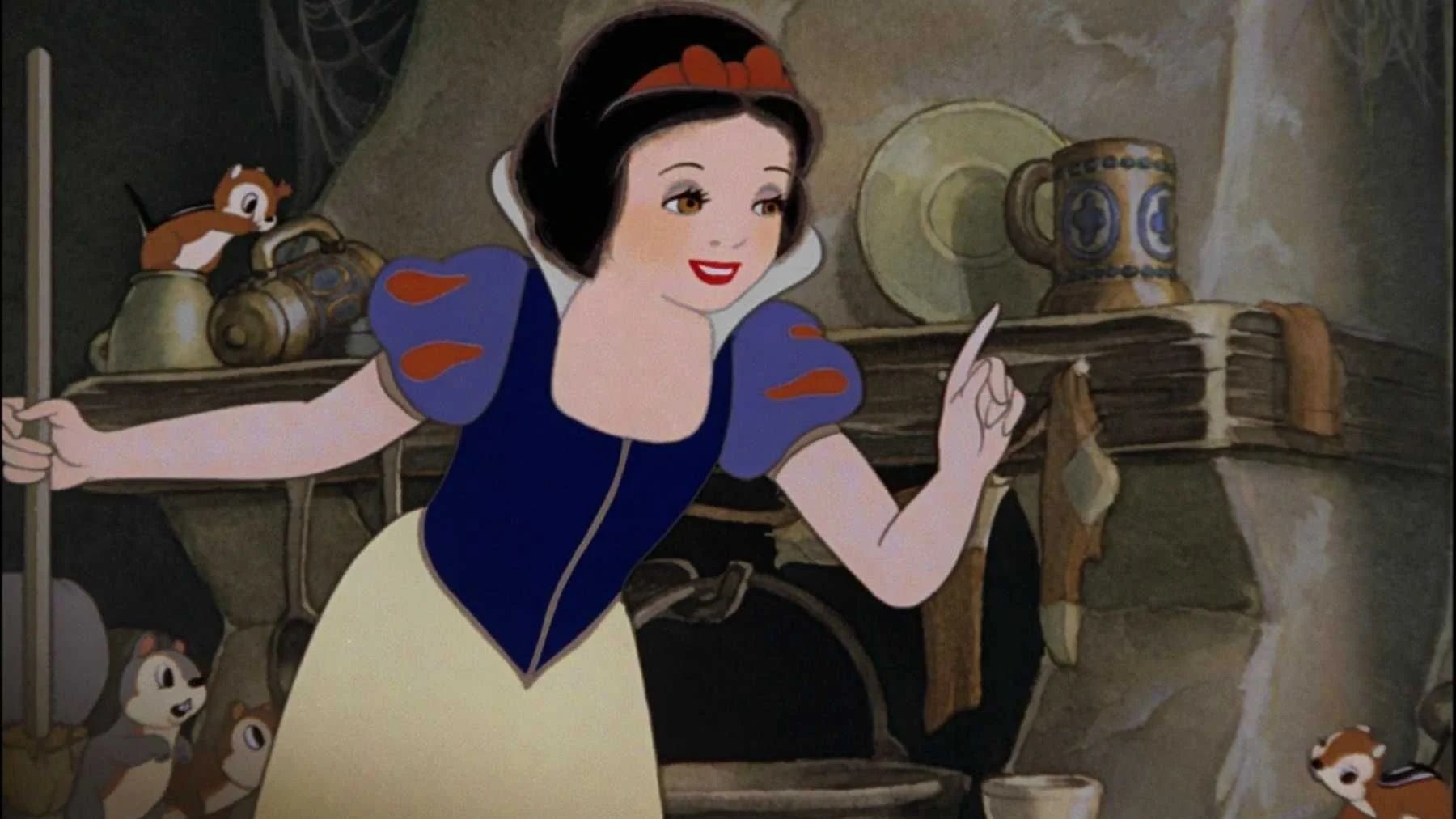
MOVIE URBAN LEGEND: The animators in Snow White and the Seven Dwarfs used actual blush makeup on Snow White's cheeks in the film.
One of the most historic animated films of all time is 1937's Snow White and the Seven Dwarfs, which was both the first full length traditionally animated film and the first feature film by Walt Disney's animation studio. The film was so expensive that Disney heavily leveraged his company (and his personal property, taking out a mortgage on his own home) to borrow money for the movie, so had it not succeeded, Disney very well could have been ruined (the margins on animated films were so tight back then that other studios who spent similar money as Disney found themselves in financial ruin even with hit films, because the films couldn't just be hits to pay off the heavy investment, they had to be blockbusters. Snow White started at a budget of $250,000 and ultimately cost $1.48 million dollars). Luckily for Disney, the film was a gigantic box office success, briefly being the highest grossing sound film period. It was such a big deal that the Academy Awards created a special Oscar to give to Disney a year later to celebrate the film that Hollywood had come to call "Disney's Folly" while it was still in production.
Part of the film's expensive budget came from the fact that Disney was a bit of a perfectionist on the production of the movie. Those perfectionist claims are probably a bit of an exaggeration, but the basic idea is surely true. As one animator on Snow White recalled, “We’d sometimes take a whole day for a close-up of Snow White — that’s how intricate the drawing was. It was so precise it was like making watches.”
It is Snow White's closeup that is actually the basis for today's movie legend. A number of places have this legend, but here's the first site that popped up when I did an internet search, "One of Snow White's most enduring characteristics is her porcelain-white skin and rosy cheeks. And according to IMDb, to get those famously rosy cheeks the animators added real makeup blush to the cells as they worked. One female animator was assigned solely to work on Snow White's make-up for all her close-ups."

That's a very common story in the world of animation, and one that has been repeated so many times that it has basically just become an accepted truth. In an epic piece for Inside Animation, though, David Johnson made a convincing argument that the "accepted truth" is not actually the truth.
Since Snow White's rosy cheeks are SO famous, it is natural that the makeup story has become so accepted. Johnson, though, explains why it doesn't really track:
In the first place, how could rouge (or lipstick, as claimed in one of the more recent sources) be applied to the cheek of a Snow White cell without making her look more like a clown than a young fairy-tale princess? After all, rouge (and lipstick) is a substance whose subtlety is dependent upon the porous nature of the surface to which it is applied, like human flesh. But try it yourself on any cell and you will be very disappointed. It is impossible to 'blend' it, at least within the small confines of a cartoon face, even in close-up. Then again, rouge smears and it is not difficult to imagine the mess that would quickly ensue when cells are stacked on top of one another. Even a fixative (also claimed to have been added to each application) would not be much help as the slight residue left from such a spray would, when hardened, be visible and slightly discolor the area. Powdered rouge would even be more elusive
Johnson, though, further explained:
Fortunately, many years ago and only after countless inquiries and talks with those involved, I succeeded in solving one of the mysteries of the Snow White iconography.
The famous blush on Snow White's cheeks was a rose-colored dye - not paint, which, when carefully applied, bled into the surface of the cell itself, thus producing this soft, diffused effect as the dye seeped through. This was applied to the top of the finished cell with a small piece of cotton wrapped around a tipple pencil, not unlike a Q-Tip. Just how this process was ultimately reached is more difficult to substantiate. The late Ruth Thompson, a cell painter on "Snow White" who later became a multiplane scene planner, recalled: "We tried everything - airbrush, drybrush, even lipstick and rouge, which is perhaps the basis for the legend because we did, in fact, try it. But nothing worked."
Luckily, they figured it out:
The airbrush was difficult to control on such a small area; drybrush was too harsh; lipstick and rouge unwieldy and messy. Everything proved to be impractical and all hope seemed lost to give Snow White her little bit of color when the idea of using a dye was proposed. Again Ms. Thompson: "Someone suggested a red dye because the blue day we added to give Donald Duck his distinctive sailor-blue never really could be washed off the cell without leaving a bluish stain where the paint had been applied." Ever since the mid 30's when color became the norm for all the cartoons, not just the "Silly Symphonies," all paints and inks were made at the studio. During this period as well cells were routinely reused for economic reasons, thus the need to wash them off. Apparently Donald's special blue color was made with a dye added to the usual powdered pigments. "So we tried that." As the women gathered around in what must have seemed just another dead-end effort, all eyes became fixed on the red dot which soon became a small glow with no perceptible edge. The hushed silence soon gave way to sighs of relief. The method had finally been found. Now the application.

Johnson explains that Helen Ogger was primarily in charge of adding this small, but important, touch to the film:
In fact, such a treatment was never attempted again on such a scale and even today, the publicity stills from "Snow White," most of which do not have the added blush, bear witness to how that little touch of extra care adds to the vitality we see on the screen. The work was done on all close-ups, most medium shots, and even on some long shots. The Queen was also similarly tinted. Hundreds of hours were needed to complete this task, arduous, repetitive and, of course, hard on the eyes. Ultimately a handful of other girls were needed to assist Helen as the clocked ticked toward the deadline.
Helen had to place several cells together on an animation board, one atop the other, just like in the process of animation, in order to get the 'registration' right (the spot of red just right in relation to the preceding and following ones) - all of this without any guide. She would work out her own extremes and then 'animate' the blush in inbetweens. Her work deserves admiration and gratitude and it is unfortunate that her contribution has remained unknown and her anonymity unaltered during her lifetime.
Amazing stuff.
So the legend is...
STATUS: False
Thanks, of course, to David, for the wonderful research.
Be sure to check out my archive of Movie Legends Revealed for more urban legends about the world of film. Click here for just Disney related legends.
Feel free (heck, I implore you!) to write in with your suggestions for future installments! My e-mail address is bcronin@legendsrevealed.com.
0 Comments